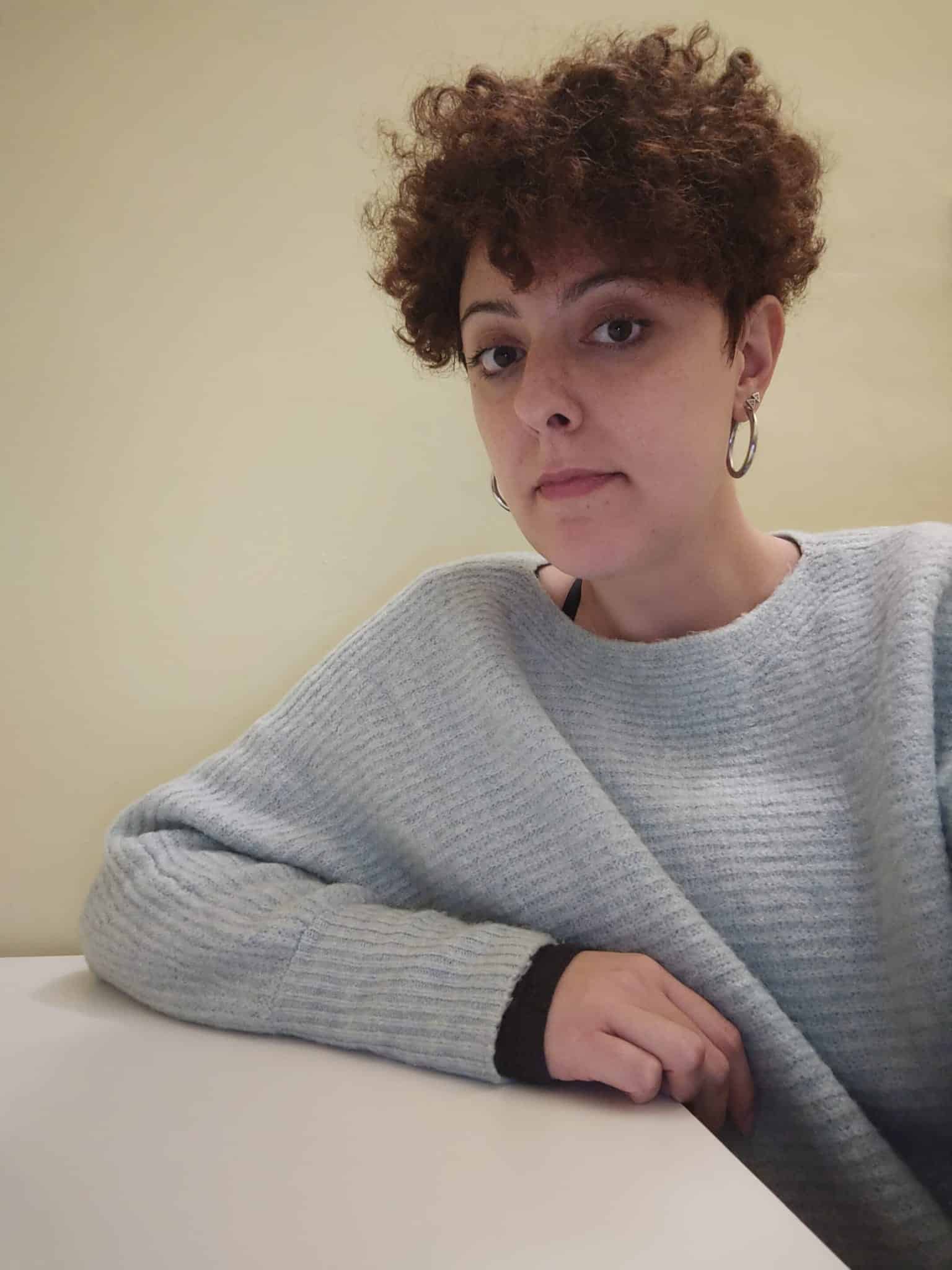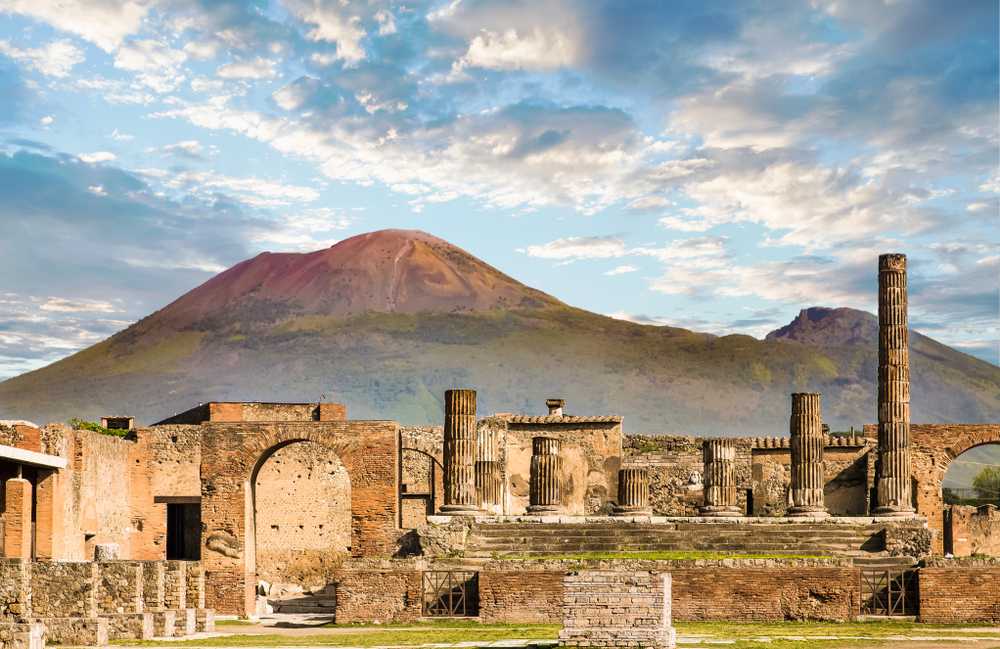On 24th October 79 B.C., everything felt like all the other days in Pompeii: in the morning, people were busy doing daily chores and nothing could foretell what would have happened soon.
With hindisght, only few tremors coming from the ground and perceived dome days could have been considered a sort of warning of the forthcoming awakening of the close Vesuvius.
On that day, at lunchtime, the volcano exploded with all its power and energy and, in less than 20 hours, Pompeii was buried by burning ashes and gases, while the near Ercolano disappeared under metres of hard and thick mud.
Many people tried to run away, going towards an atrocious and desperate death.
Pompeii has been buried for centuries, until 1748, when it was rediscovered and excavation in the area began.
To date, two-thirds of the city have been brought to light.
Di cosa parliamo in questo articolo
2 million visitors arrive at Pompeii every year
Curiosity raised by pompeian ruins has been growing more and more, reaching now about 2 million visitors every year.
If you too are fascinated by this archaeological site – among the most visited ones in the whole world – you must absolutely take some notes about the most famous landmarks recommended by our list.
Achaeological excavation measures about 440.000 square metres and, in 1997, it has been elected, together with the city of Pompeii, “UNESCO World Heritage Site”.
When you plan your stay in Naples, among the thing you want to see, make sure to do a stop-over in Pompeii, because you are too close to lose it!
Since the excavation area is wide, visiting Pompeii in just one day is very complicated but not impossible: you have to arrive very early in the morning, in order to avoid the long queue, wear comfortable shoes and a handy outfit.
If you visit Pompeii during summer, bring some protective sunscreen and a water bottle: it is really hot!
About the history of the ancient Pompeii
Pompeii was a city belonging to ancient Rome, it is 2000 years old and, due to its archaeological ruins, it is a unique and evident proof of the social structure of that time.
The buried city is nearly intact, shielded by lava erupted from the Vesuvius in 79 A.D.
Around the VIII century B.C., Osci – one of the first italic peoples – built their own dwellings, giving rise to the first original core of the city.
Soon, Pompeii became an important road and harbour crossroad, coveted by adjacent territories. Greeks were the first ones who subdued it.
Its political vicissitudes were overwhelming: as a matter of fact it was then ruled by Etruscans; again by Greeks; Samnites and, finally, by Romans.
In spite of all these changes, Pompeii was growing prosperous and was turning its agricultural town into a pivotal manufacturing and commercial junction.
It was a pleasant meeting place for its proximity to Vesuvius and the sunny weather, so that it became in a short while a shelter for eminent Roman citizens in search for rest and tranquillity.
Besides the sumptuous villas, commercial and manufacturing businesses were growing more and more until 62 A.D., when a possible warning earthquake forced a substantial part of the population to leave the city throughout the following year.
Nevertheless, life continued in Pompeii and an attempt to rebuild what got destroyed was made until 79 A.D., the fateful day in which Vesuvius, believed to be extinct, roused.
Lava, volcanic ashes and lapilli spilled onto the city, erasing all life, and the few survivors who had run away towards Stabiae and Nocera, were reached and killed by poisonous gases.
This hell included thunders, earthquakes and tsunami, and lasts for 3 days.
In 1748, the archaeologist Roque Joaquín de Alcubierre decided to start another excavation campaign, after discovering Ercolano ruins by chance.
However, findings were very vague at that time and they were often buried again without a proper cataloguing.
Between 1759 and 1799, a part of the city was brought back to light and remained visible, due to the will of Ferdinand I of the Two Sicilies and, especially, of his wife Maria Carolina.
Since then, excavation went on, revealing everyday objects, businesses and fun activities, villas, temples and people.
How to get to Pompeii
Reaching Pompeii is easy, and you can pick the most suitable way for your needs:
- by train: get on Circumvesuviana, specifically a Napoli-Sorrento train line. The stop is Pompei-Scavi. Otherwise, Trenitalia leaves from Napoli and can take you to Pompei in 35 minutes;
- by bus: SITA, CSTP and EAVBUS lines, reaching Pompeii in about 40 minutes, leave from Napoli central station;
- by car: if you are coming from north, follow A3 Napoli-Salerno highway and take Pompei-Ovest exit; if you’re coming from south, the exit is Pompei-Est.
What to see in Pompeii
As you may have guessed, ancient Pompeii is rich in beauty and charm: each stone, place and object will tell you a story.
Strolling around its roads, you can live again the life of the time to the fullest.
We recommend that you should sign up for a guided tour, so that you can listen to salient information about archaeological excavation while enjoying the site.
But if you decide to visit it by yourself, then here is a list of not-to-be-missed places!
Villa of the Mysteries
Let’s start from one of the most famous building of Pompeii: Villa of the Mysteries.
Partially unearthed in 1909-1910, it probably belonged to Istacidii family.
Undoubtedly, it is among the most important residences of Augustan Pompeii: an artistic and architectural wonder.
Once you enter the villa, by means of a side passage, you will access the Hall of the Mysteries from the parlor, where you can admire the frescoes which gave it its name.
They are part of a pictorial cycle extensively debated among scholars: it is believed to be a secret initiation ritual, in which details of a woman initiated into the cult of Dionysus are still visible.
House of the Faun
This private villa is so large that it covers an entire block of ruins of Pompeii: its surface is about 3000 square metres.
It is named after the bronze statuette of the Faun, which is located at the centre of the impluvium.
This villa has a significant number artwork, like the Alexander Mosaic, depicting the battle between Alexander and Darius the Great.
Nonetheless, the complex geometrical pattern of the floor is what draws the attention of visitors.
Roman Amphitheatre
Among the things to visit in Pompeii, you can not miss the Roman Amphitheatre!
It was built around 70 B.C., and it is so ancient that the word ‘amphitheatre’ was not in use at that time.
Pompeians called it ‘spectacula’, because the word ‘amphitheatrum’ spread out later through Vitruvio’s writings.
It is the first Roman amphitheatre built out of stone: it could house over 20.000 spectators and it was intended to host bloody battles among gladiators and amusing circus games.
Forum
Do not forget to visit the Forum, the heart of the city, the main square, the political, economic and religious centre.
The vital city activities were carried out here: public events, trades, administrative regulations and electoral propaganda.
Although most buildings are ruined, an aristocratic atmosphere and the splendour of the ancient Pompeii can still be perceived.
If you close your eyes just for a moment, you can hear voices from the market, political conversations and those about city administration.
Temple of Apollo
There were many places of worship in Pompeii and you definitely can not skip a visit at the Temple of Apollo, the most ancient sacred place testifying the long history of the city.
The temple shows an Etruscan architecture, at a later time modified by Greeks and, further, by Romans.
On the sides of colonnade, replicas of the statue of Apollo and of the bust of Diana are visible, while the original ones are kept at the National Archaeological Museum of Naples.
Temple of Jupiter
The Temple of Jupiter is of historical importance too: it is a buidling dating back to the II century B.C.
It has a ladder accessing a high pedestal, on which the cella where the statue of Jupiter was kept rises up – of which only the head remains.
It could be claimed that all the temples of Pompeii are endowed with a certain charm, but the ones we are listing here hold peculiar findings to be disclosed.
Temple of Isis
This temple was one of the first element emerging at the beginning of the excavation in Pompeii.
Located behind the Teatro Grande, the Temple of Isis has been erected at the end of the II century B.C. It is a Roman temple devoted to the Egyptian goddess Isis.
It has a ladder accessing two lateral recesses frontally, in which there were the statues of Anubis and Harpokrates, Egyptian deities connected with the cult of Isis.
The name of the temple is due to the statue of Isis rediscovered under the colonnade: it seems that the cult spread during the Hellenistic period for the religious relations among Greeks, the East and Egypt.
House of the Tragic Poet
“Beware of the dog!”
This is the latin notice that you will find at the entrance to the House of the Tragic Poet.
It is a relatively small and typical atrium house, which is located further west of Pompeii ruins.
It is named after the scene of the reharsal of a satyr chorus, painted on a squared mosaic: at the moment of the discovery, researchers thought that the house could belong to a famous poet.
House of the Vettii
The house is supposed to be property of Aulus Vettius Conviva and Aulus Vettius Restitutus, for the finding of two bronze seals belonging to them.
This villa represents the typical Roman architecture of the time.
The residence covers an area of 1.100 square metres, and both its building and its decorations belong to the final period of the occupation of the city.
This is a key point to interpret the appearance of the city on the eve of its destruction.
House of Sallust
The house of Sallust owes its name to an electoral inscription found on the facade, in which a one Sallust is mentioned.
It is very likely that it was an inn, and it has also a little garden, a veranda covered on the back, a fresco of the goddess Diana and a little grocery store at the front.
Teatro Grande and Teatro Piccolo
Theatre was the favourite pastime by Romans, and there were two buildings in Pompeii.
Teatro Grande was unroofed and could house about 5.000 spectators; it was intended for theatrical performances, like the works by Plautus and Terence.
Teatro Piccolo, called Odeion, had a roof and was used above all for musical performances.
The Garden of the Fugitives
The Garden of the Fugitives is the most evocative place in Pompeii, where you will find casts of people that tried to run away from the eruption.
It is an ancient vineyard safeguarding a group of people who could not survive in the back part of the city.
There are 13 bodies in the garden, frozen in a grotesque and distressing time, which mirrors the horrible final moments of the city.
It is incredibly interesting and unsettling at the same time!
Terme Stabiane
Terme Stabiane, dating back to the II century B.C., are among the most ancient and known ones of the Roman world.
The main entrance is on Via dell’Abbondanza and it leads to a wide courtyard, with a pool on the left and the male part on the right.
This area was made up of dressing rooms, frigidarium (cold-water baths), tepidarium (warm-water baths) and calidarium (hot-water baths).
The famale part was just up against the male one and it was organized in a similar way, except for a smaller size and the absence of decorations.
Lupanar
The ancient lupanar – brothel – is a two-storey little house: there was the residence of the owner and his slavesupstairs, while downstairs there were 5 bedrooms with stone beds and paintings about erotic scenes.
Frescoes served for a practical purpose: to show customers their possible requests.
Prostitutes were mostly Greek and Asian slaves, who worked for money.
The name derives from ‘she-wolf’, the latin word for prostitute.
These are just some among the most famous places around the exacavation area, which offers many other fascinating and interesting locations, like the other domus – House of the Lovers, House of the Surgeon, House of the Garden of Hercules – and the other temples, the Basilica and trades like the bakery.
You can find a complete guide to the excavation of Pompeii clicking here.
Our Pompeii Room
If you are planning a trip to Naples, you should stop by Pompeii: it would be a shame missing this extraordinary place!
So much that our accomodation facility, Napoliving, offers a room dedicated to it.
It is decorated with a Popeian-red wall, and paintings and details recalling the ancient city destroyed by the Vesuvius. Our Pompeii room is waiting for you!

Insegnante di lingua e letteratura inglese per la scuola secondaria, traduttrice e correttrice di bozze. Coltivo con devozione e premura l’interesse per la cultura giapponese, e nutro tutte le mie altre creature con la stessa cura: libri, film, musica. Viaggio tanto, ma resto figlia di Partenope.

